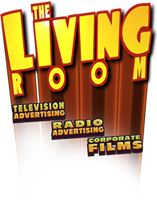
With the rise of digital much has been made of the waning power of TV advertising, but is it truly on the decline?
Most research still suggests TV advertising is the most effective form of advertising. Firstly, there’s the fact that TV advertisers derive an average of £1.79 in profit for every £1 spent. A figure that represents the greatest return of any medium.
Then, there’s the mammoth exposure TV provides with 94.2% of the UK population reached by the medium every week. Couple this with the fact that the IPA suggesting that, on average, a successful three year television ad results in a 140% uplift in profits and you’ve got to wonder why the effectiveness of TV advertising has ever been questioned.
Of course, TV advertising is more costly than its digital peers but, if you can afford it, why aren’t you exploring the possibility of getting your product or service on TV?
Below, we’ve explored the TV advertising case study of Quorn, who have invested heavily in TV advertising in recent times.
You will probably be familiar with their adverts- Quorn currently utilise British Olympic legend Mo Farah in their adverts.
Still, despite the light-hearted nature of each advert, it would be short-sighted not to examine the facts to help understand why Quorn are so successful at TV advertising.
Quorn
The Problem
Quorn’s always had somewhat of a stigma attached to it. Perceived and presented as a meat-substitute, Quorn has always been seen as the preserve of vegetarians, making it difficult for the company to expand beyond this market.
Quorn decided to start using their marketing to highlight the product as a healthy, protein-rich food source for everyone rather than simply a vegetarian staple.
The question that remained was which medium would be the most effective way to spread this message?
After analysis, Quorn worked out that their sales were high during periods of advertising and declined rapidly in periods without advertising, with TV the most effective advertising medium based on ROI.
The Solution
So Quorn decided to increase their TV advertising presence, since 2011 they have increased their spend in this area by 18% year on year.
Key Lessons to TV Advertising Success
Quorn have learnt a lot since they started employing this strategy. In 2012, for example, their marketing team worked out that by reducing the length of their TV ads to just twenty instead of thirty seconds they could drive significantly greater ROI.
They also discovered that the adverts required a greater focus on the end result of using Quorn i.e. healthy, tasty looking meals. Also, the emotively charged tagline ‘make one change’ was proving incredibly effective.
Quorn effectively coordinated their TV campaigns with digital operations. Increased website traffic was encouraged by utilising content marketing that related to their TV Adverts. This included producing healthy recipes that users would have seen on their TV Adverts, the result was a spike in web traffic by 6,000 unique users a month.
Quorn also employed a celebrity endorsement in the form of Olympian Mo Farah in 2014. We’ve discussed the use of celebrity endorsers before on this blog and it seems Quorn are a good case study to suggest it’s an effective strategy.
Utilising Farah helped increase Quorn’s ROI from TV Advertising once again.
The Results
Alongside the increased investment in TV Advertising, Quorn’s ROI on every pound spent has continually increased throughout the same period.
Our Conclusion
TV advertising remains the strongest advertising medium in spite of the rise of digital. If anything, the Quorn case study demonstrates that TV advertising and digital actually complement each other rather well.
Ignoring TV advertising is ignoring the facts!
If you require guidance or help in regard to TV Advertising feel free to contact The Living Room team for friendly help and advice today.







